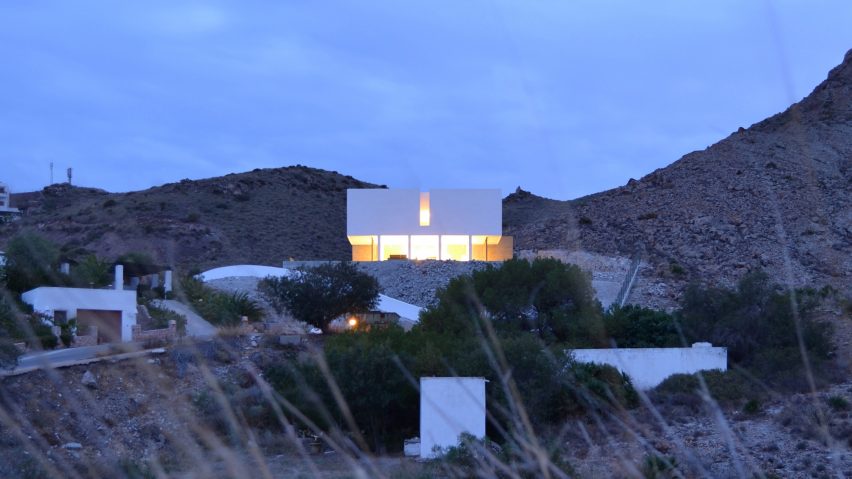
JFGS perches white box atop glass pavilion to create Casa Gallarda
A bright white box containing the private areas of this house in Spain's Almería region rests on top of a glass-walled living space that provides uninterrupted views of the nearby Mediterranean Sea.
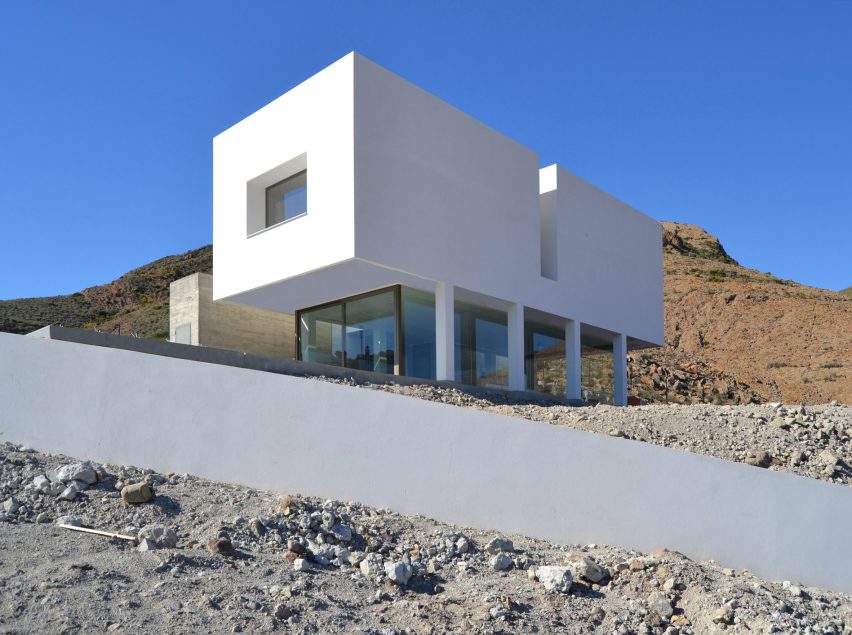
Casa Gallarda is located in the small fishing town of Níjar and was designed by local architect José Francisco García-Sánchez (JFGS) as a holiday home for a young couple, who will likely make it their permanent residence one day.
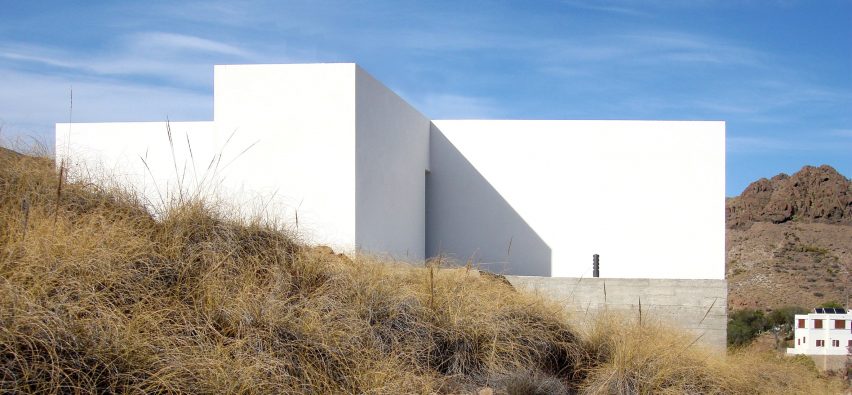
The town is situated on a steep hillside between a cape known as El Puntón and the Cerro Negro mountain – scenery the architect was keen to make the most of.
He divided the house into three distinct parts that have varying relationships to the landscape. The open-plan living space containing the kitchen and dining area occupies the entirety of a glazed ground-floor pavilion allowing occupants to look out towards the mountains and the sea.
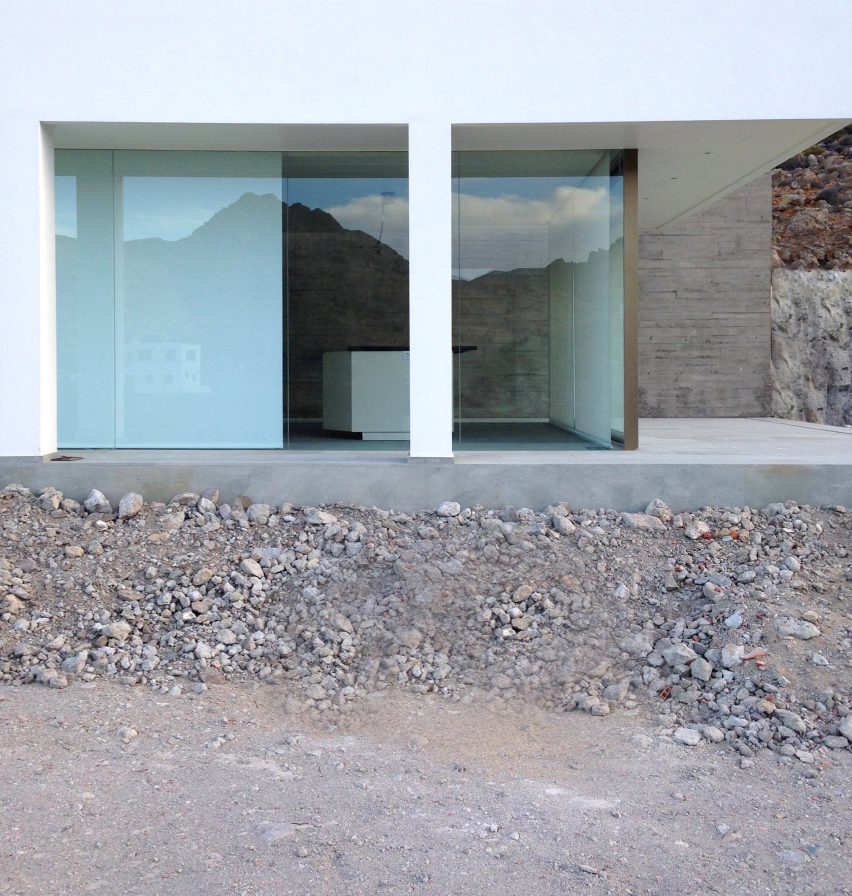
The first section is a solid white volume that forms the upper storey is supported. It is supported by a row of columns at the front and leans out over the living space to shade to the glazed surfaces.
This crisp white box references the architecture of the nearby town and forms a protective enclosure for the bedrooms. Deeply recessed windows cut into the box limit overlooking and direct exposure to sunlight.
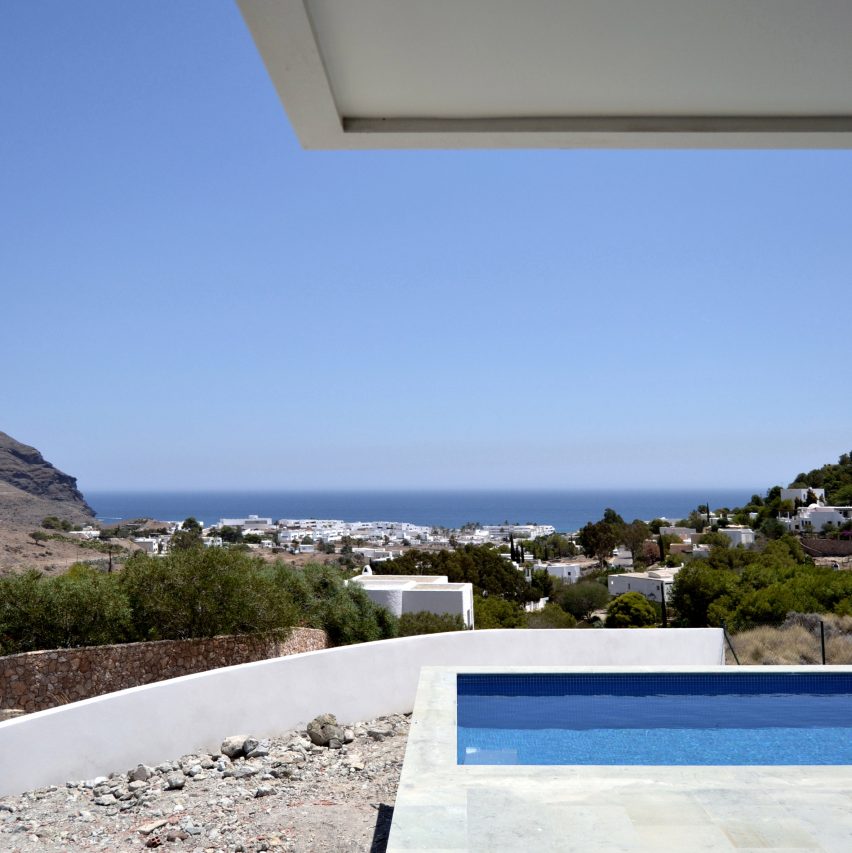
"Casa Gallarda is heir to a tradition of Mediterranean houses: whitewashed volumes whose windows are either protected from direct radiation of the sun due to their small size or their setback, avoiding the annoying greenhouse effect that happens when direct sunlight falls on the glass surfaces," said García-Sánchez.
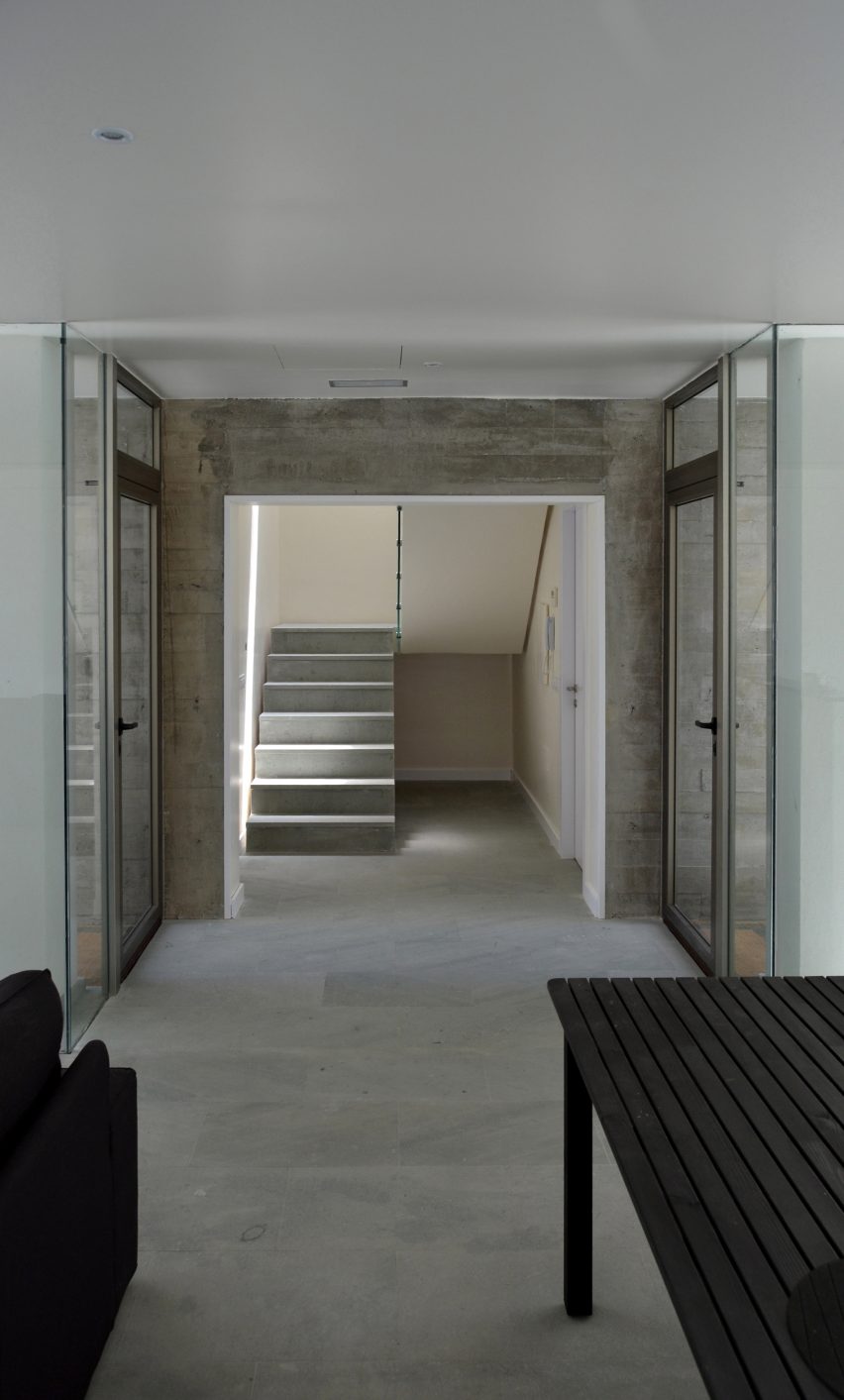
A terrace surrounding the glass box provides a covered space between the house and the gardens, which will be planted with trees. This terrace extends to accommodate an infinity pool at the front of the building.
"It is a house of ample dimensions in its public area and is always connected with the outdoor area," said García-Sánchez. "Therefore, it proposes a life of simple acts without sacrificing the daily pleasures: water, plants, sitting to read under a tree or diving into the water."
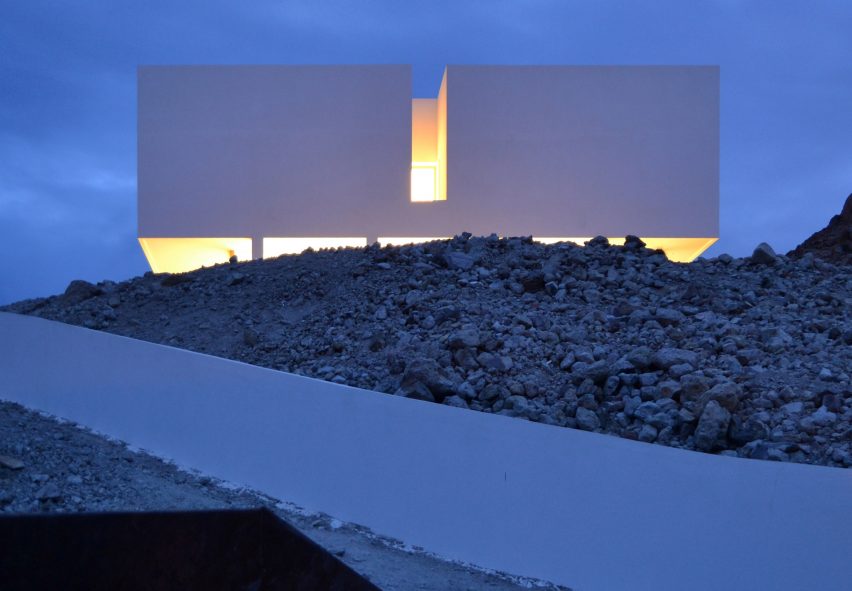
The third part of the house is a monolithic concrete volume that emerges from the hillside at the rear of the site. It contains a skylit staircase and a toilet, as well as internal and external storage spaces.
The robust materiality of this structure is intended as a link to the natural topology, while its partial submersion in the sloping ground helps to regulate the internal temperature.
Photography is by José Francisco García-Sánchez.